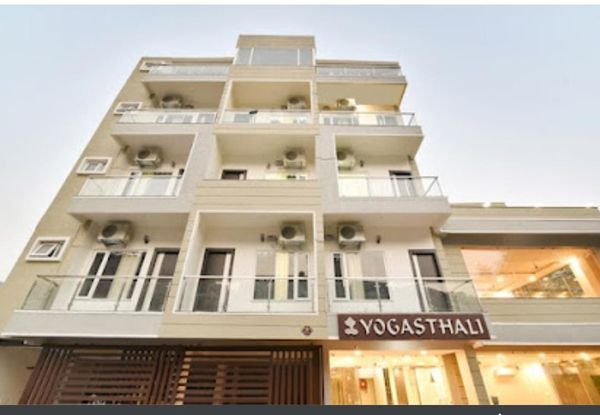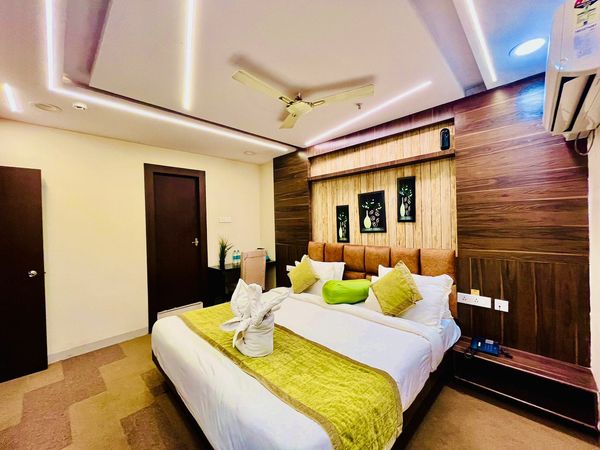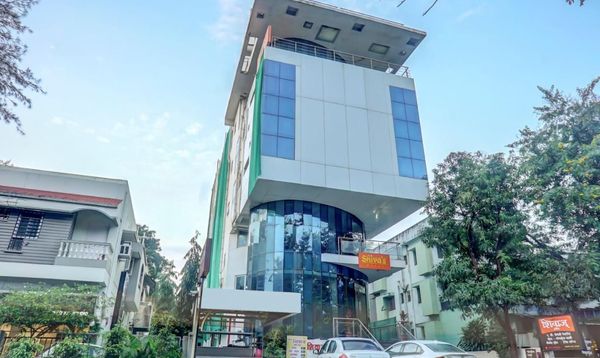Gokyo Lake Trek Guide – Complete Travel Information
 Deepanshu Negi
11 Aug, 2025
9 mins read
35
Deepanshu Negi
11 Aug, 2025
9 mins read
35
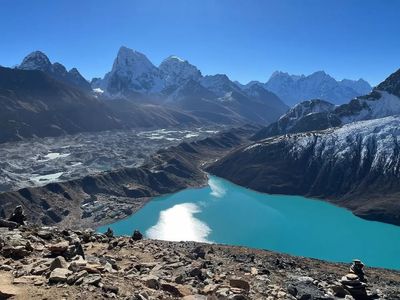
Gokyo Lake is a stunning high-altitude freshwater lake system located in the Everest region of Nepal. It sits at an altitude of about 4,700–5,000 meters, within the UNESCO-listed Sagarmatha National Park. Famous for its deep turquoise color, crystal-clear reflections of the surrounding peaks, and serene atmosphere, Gokyo Lake is a must-visit for trekkers seeking Himalayan beauty with a touch of tranquility. Beyond the lake itself, the trek offers incredible views of Cho Oyu, Makalu, Lhotse, and even Mt. Everest from nearby viewpoints.
Best Time to Visit Gokyo Lake
The weather in the Everest region can vary greatly depending on the season, so timing your visit is essential.
- Spring (March–May): This is one of the most beautiful times to trek, with blooming rhododendrons and crisp mountain air. The skies are clear, offering uninterrupted views of the snow-covered peaks.
- Autumn (September–November): Considered the best season for trekking, with stable weather, bright sunshine, and excellent visibility.
- Winter (December–February): The lake and surrounding trails turn into a white wonderland. While fewer trekkers come during this season, you must prepare for sub-zero temperatures.
- Monsoon (June–August): This is the least recommended time due to heavy rainfall, slippery trails, and cloud-covered peaks.
How to Reach Gokyo Lake
The most common route to Gokyo Lake begins with a scenic flight from Kathmandu to Lukla. From Lukla, trekkers head towards Phakding, then continue to Namche Bazaar. The trail then splits from the Everest Base Camp route, heading through Dole and Machhermo before reaching Gokyo.
- Permits: You will need a TIMS card and a Sagarmatha National Park entry permit.
- Trek Duration: Typically 7–9 days to reach Gokyo, depending on acclimatization.
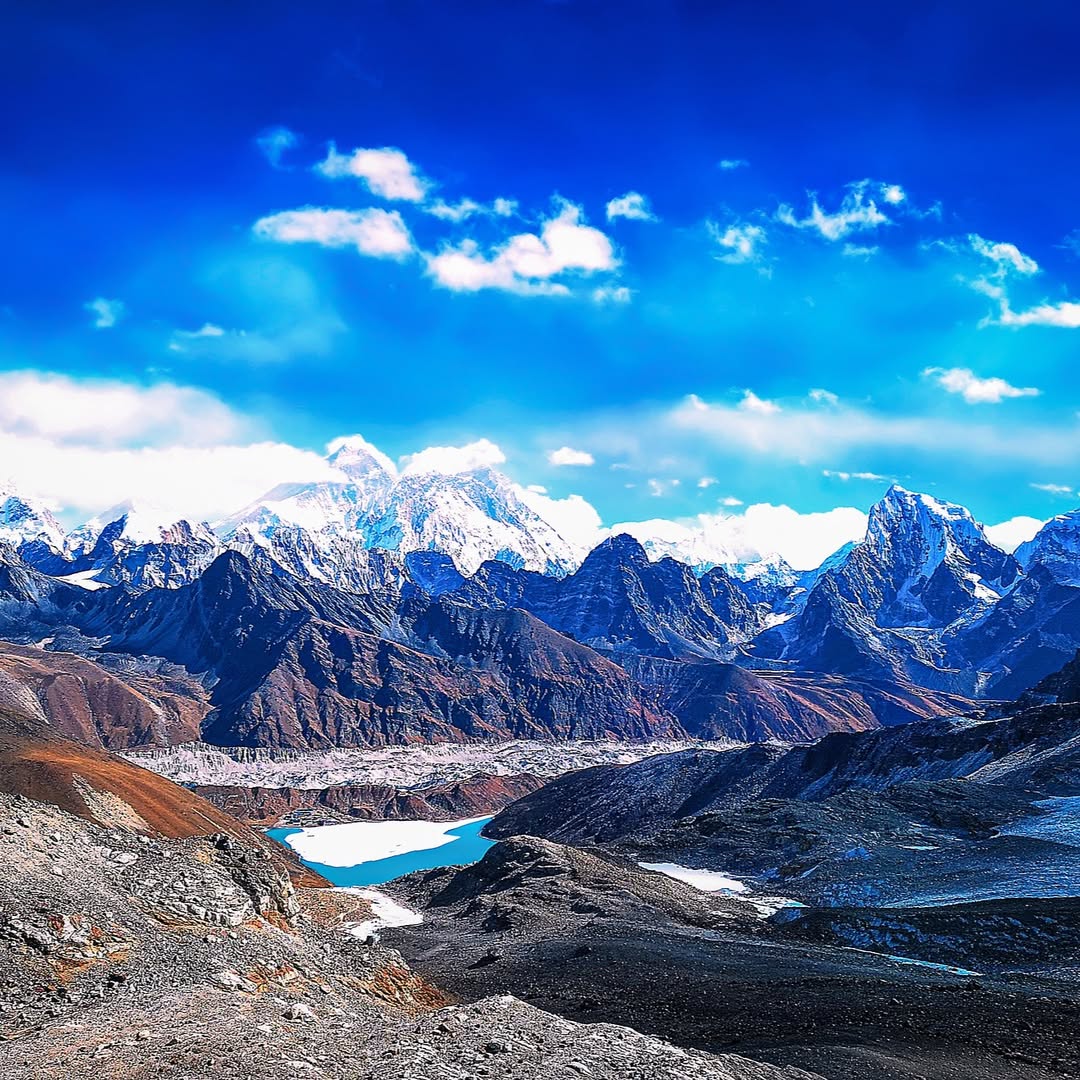
Gokyo Lake Trek Route Overview
A standard itinerary includes stops at:
- Lukla → Phakding → Namche Bazaar → Dole → Machhermo → Gokyo
- From Gokyo, trekkers can hike to Gokyo Ri, a famous viewpoint that offers panoramic Himalayan views. Another popular side trip is to the Fifth Lake (Ngozumpa Tsho) for remote alpine beauty.
Trek Difficulty & Altitude Information
The Gokyo Lake trek is moderate to challenging, with long walking days and significant altitude gains. The highest point is Gokyo Ri at about 5,357 meters. Proper acclimatization is essential to avoid altitude sickness. Trekkers should maintain a slow pace, drink plenty of water, and take rest days when needed.
Highlights of Gokyo Lake Trek
- Pristine turquoise waters of Gokyo Lake.
- Views of four 8,000-meter peaks: Everest, Lhotse, Makalu, and Cho Oyu.
- Crossing the Ngozumpa Glacier, the largest glacier in Nepal.
- Gokyo Ri sunrise and sunset vistas.
Nearby Places to Visit
1. Gokyo Ri
A short but steep climb from Gokyo village takes you to Gokyo Ri, where you can enjoy 360° views of the Everest region. From here, Mt. Everest stands tall in the distance, surrounded by other majestic peaks.
2. Fifth Lake (Ngozumpa Tsho)
Located about 3 hours from Gokyo, the Fifth Lake offers an untouched wilderness experience. The views of Cho Oyu and surrounding glaciers are unmatched.
3. Thonak Lake
The largest of the Gokyo Lakes, Thonak Lake is a peaceful spot for photography and quiet reflection.
4. Everest Base Camp Trek
One of the greatest adventures in the world, the Everest Base Camp Trek takes you close to Mt. Everest while passing through traditional Sherpa villages in the Solukhumbu region. The route passes deep green forests, offers cultural learnings, encounters with wildlife, and showcases the rich biodiversity of Sagarmatha National Park.
Flora and Fauna
The region is rich in biodiversity, from lush rhododendron forests in the lower altitudes to alpine meadows and glacial landscapes higher up. Wildlife sightings may include the Himalayan tahr, snow leopard (rare), musk deer, and various bird species like the Himalayan monal.
Accommodation & Food
Trekkers stay in traditional teahouses along the route. Accommodation is basic but comfortable, offering warm meals like dal bhat, noodles, soups, and Tibetan bread. In Gokyo village, a few lodges also offer bakery items and hot showers.
Essential Tips for Gokyo Lake Trek
- Prepare physically with cardio and leg-strengthening exercises.
- Carry proper cold-weather clothing, especially for early mornings and nights.
- Stay hydrated and avoid alcohol at high altitudes.
- Keep a flexible itinerary to allow for acclimatization.
Responsible Trekking
Follow Leave No Trace principles to preserve the fragile Himalayan environment. Carry reusable bottles, avoid single-use plastics, and respect local customs. Supporting local businesses and hiring guides or porters also benefits the community.
FAQs About Gokyo Lake Trek
1. How difficult is the Gokyo Lake trek?
The trek is moderate to challenging, with high-altitude walking and steep climbs. Proper acclimatization is essential.
2. What is the best season to visit Gokyo Lake?
Spring (March–May) and autumn (September–November) offer the best weather and clear views of the Himalayas.
3. Can Gokyo Lake be visited during winter?
Yes, but expect freezing temperatures and snow-covered trails. Winter visits are quieter but require proper gear.
4. Is Gokyo Lake part of the Everest Base Camp trek?
Gokyo Lake is on a different route, but trekkers can combine both by crossing the Cho La Pass.
5. What permits are required for the Gokyo Lake trek?
You need a TIMS card and Sagarmatha National Park entry permit.
Written By:
Deepanshu Negi



Hotels at your convenience
Now choose your stay according to your preference. From finding a place for your dream destination or a mere weekend getaway to business accommodations or brief stay, we have got you covered. Explore hotels as per your mood.
